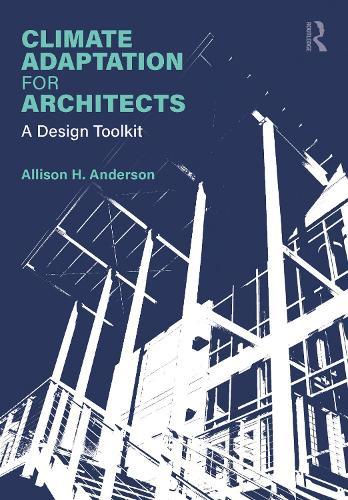Overview
Architecture must adapt to protect people from the threat of climate change. About half of the world’s population lives in contexts that are highly vulnerable to climate change as hazards continue to intensify, with global disasters projected to reach 560 events per year by 2030, or 1.5 events every day. The accelerating frequency and intensity of disasters underscores the urgency to prepare for severe events to protect people, communities, and essential systems but also to protect the environment which provides shelter, livelihoods, cultural heritage, and public functions. This book provides a comprehensive reference of climate adaptation design tactics and a toolkit for adaptation to shocks and stresses, outlining the process for architects and designers to: Understand the risks posed by climate change to the built environment. Reduce the risks to people and the built environment from natural hazards. Reduce human vulnerability to shocks and stresses by strengthening resilience and adaptive capacity. Design the built environment to adapt to changes over its lifetime. Design buildings and cities to reduce dependence on fossil fuels. Preserve biodiversity and support natural resources. Climate Adaptation for Architects presents 45 adaptation tactics responding to the most consequential effects of climate change: heat, water, wind, and resource scarcity. Each chapter includes images, a definition, background information, key design considerations, potential impacts, and resources for further information. This is a valuable resource for every architect, landscape architect, urban planner, developer, and policymaker.
Full Product Details
Author: Allison Anderson
Publisher: Taylor & Francis Ltd
Imprint: Routledge
Weight: 0.889kg
ISBN: 9781032702919
ISBN 10: 1032702915
Pages: 386
Publication Date: 16 September 2025
Audience:
College/higher education
,
Professional and scholarly
,
Tertiary & Higher Education
,
Professional & Vocational
Format: Hardback
Publisher's Status: Active
Availability: Not yet available

This item is yet to be released. You can pre-order this item and we will dispatch it to you upon its release.
Reviews
""Resilience for architects is a matter of understanding how climate hazards threaten to damage and destroy a building and making hundreds of well-informed design decisions. Allison Anderson’s book, Climate Adaptation for Architects, is written with the obvious insight of a practicing architect who has made those hundred of decisions many times and lives up to the responsibility to make buildings that will stand the tests of increasing risks."" David Perkes, AIA, Professor, Mississippi State University. ""The rising number of climate-related disasters worldwide make investing in adaptation increasingly critical. This is an essential resource for designers working at multiple scales to ensure that planning, infrastructure, and buildings are prepared for disasters."" Amy Chester, Director, Rebuild by Design ""Resilient design is essential if we choose to protect people and property from a warmer, more chaotic climate. Luckily, the path forward is clear thanks to Climate Adaptation for Architects: A Design Toolkit. With design strategies that cover the full breadth of challenges we face, every architect now has the tools necessary to design for the future we know is coming."" Corey Squire, Author of People, Planet, Design: A Practical Guide To Realizing Architecture’s Potential ""Climate Adaptation for Architects provides essential knowledge to drive the crucial need to integrate resilience and adaptation into the built environment. The book is a comprehensive guide to adaptive design solutions at all scales – from materials to community scale, from theory to application. The clear organization by risk category, with great illustrations, makes the book easily accessible as a go-to guide. It should be an indispensable resource for all architects, from students to seasoned professionals."" Mary Ann Lazarus, FAIA LEED Fellow, Architect and Consultant, Cameron MacAllister Group, Adjunct Faculty, Washington University in St. Louis
Author Information
Allison H. Anderson, FAIA, is the founding principal of unabridged Architecture, a firm recognized for incorporating sustainability, climate change adaptation, and resilience across a wide variety of project scales. Allison was the first LEED‑Accredited Professional in Mississippi, focused on sustainability. After Hurricane Katrina devastated her community, unabridged Architecture began exploring resilience and climate adaptation. Her research is included in the Oxford Research Encyclopedia of Natural Hazard Science, the AIA Resilient Project Process Guide, AIA Climate Action Playbook, and the AIA Framework for Design Excellence. Allison has taught architecture at the University of Texas, Tulane University, and Louisiana State University. She is a Fellow of the American Institute of Architects.



